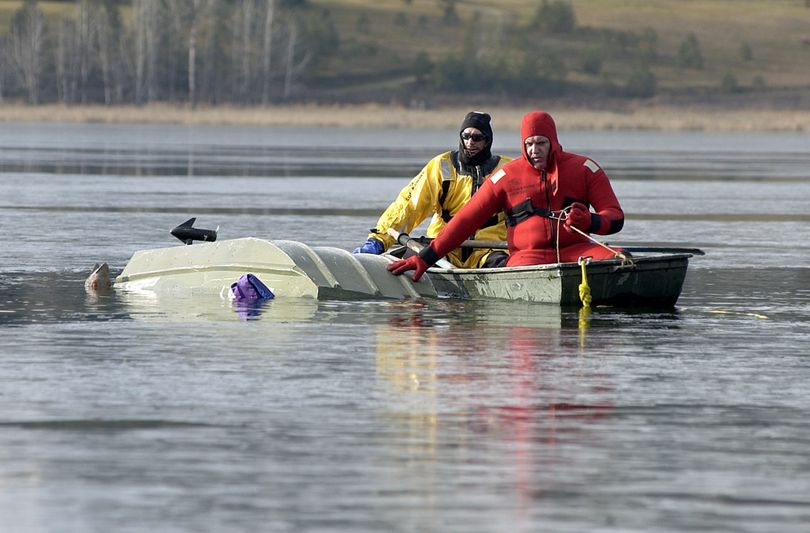Cold water a major safety factor for waterfowlers

WATERFOWLING -- Water does not have to be near freezing to kill, it only has to be colder than a person to cause potentially fatal hypothermia.
With the waterfowl seasons about to open, Idaho Fish and game officials are urging waterfowl hunters who hunt from boats are to wear life jackets and take necessary safety precautions when on the water.
Nationwide last year, 15 hunters lost their lives in boating accidents. Eleven victims drowned because they were not wearing life jackets, the Idaho Department of Parks and Recreation reports. Overloaded boats and failure to wear life jackets are leading reasons Idaho typically loses a couple of waterfowl hunters every year.
Cold water wicks body heat 25 times faster than air at that same temperature. A hunter who falls in has only a few minutes before the cold renders numb numb and unable to swim.
Most boats float even when capsized or swamped, so get in or on the boat to get as far out of the water as possible. Wearing a life vest is a must. It will help preserve body heat and keeps even an unconscious person stay afloat. Get to shelter, change into dry clothing and warm up slowly.
Read on for more timely tips:
Here are some tips to remember when using open boats during cold weather:
- Life jackets only work if they are worn. Most drowning victims could have survived if they had worn theirs. Idaho law requires a life jacket on board for every passenger, and a throw-able personal floatation device is required in boats more than 16 feet long.
- Stay within the load limits shown on the boat’s capacity plate. All vessels under 20 feet in length and built after November 1, 1972, must have a capacity plate permanently attached and clearly visible. For boats that don’t have a capacity plate, use this formula: boat length times width divided by 15 gives the number of passengers of about 150 pounds each. Distribute the load evenly and keep it low.
- In a canoe, each person should paddle on the opposite side at all times to maintain balance.
- Stay seated. Standing to shoot is not worth the risk of parting company with the boat. Sitting on the sides can also capsize the boat.
- If the boat capsizes on a large lake, it is better to sit on top of the boat than to swim more than 100 feet with a life jacket, or 50 feet without a life jacket. By swimming or treading water, a person will cool 35 percent faster than if remaining still.
- Do not swimunless there is absolutely no chance of rescue.
- Leave the booze at home. Alcohol makes a person more susceptible to hypothermia, interferes with their ability to swim and to make quick decisions in an accident.
- Do not be afraid to cancel the trip if the weather turns bad.
